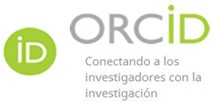Innovative integration of ICT in English teaching: a focus on the transformation of educational policies referring to new technologies in the university field
DOI:
https://doi.org/10.62697/rmiie.v3i2.80Keywords:
English platforms, Pearson, English teachingAbstract
The purpose of this paper is to examine the use of English platform in English teaching programs in Metropolitan Languages School. Pearson is a global education company that provides educational materials and services to learning institutions around the world. The company has developed several digital platforms that are used by universities and other institutions to enhance teaching and learning. This paper will explore English Platforms that are currently in use in English teaching programs, focusing on the benefits and drawbacks of these platforms, and analyzing their impact on student learning outcomes supported by Ecuadorian educational policies.
Downloads
References
Abedi, E. A. (2023). Tensions between technology integration practices of teachers and ICT in education policy expectations: implications for change in teacher knowledge, beliefs and teaching practices. Journal of Computers in Education, 1-20. https://link.springer.com/article/10.1007/s40692-023-00296-6
Capote Barreras, A., & Abreus González, A. (2022). La formación continua en tecnologías de la información y las comunicaciones de los profesores de idiomas. Revista Científica Cultura, Comunicación y Desarrollo, 7(3), 49-54. https://rccd.ucf.edu.cu/index.php/aes/article/view/391
Castañeda Mora, J. E. (2023). Sistematización del proyecto de atención a personas adultas mayores en el cantón San Felipe de Oña en el marco al convenio de cooperación interinstitucional entre el MIES y el GAD municipal de San Felipe de Oña. (Tesis de licenciatura). Universidad Politécnica Salesiana.
Ecuador. Consejo de Educación Superior. (2022). Reglamento de Régimen Académico. https://www.ces.gob.ec/wp-content/uploads/2022/08/Reglamento-de-Re%CC%81gimen-Acade%CC%81mico-vigente-a-partir-del-16-de-septiembre-de-2022.pdf
Ecuador. Secretaría Nacional de Planificación. (2021). Plan De Creación De Oportunidades 2021-2025. https://www.planificacion.gob.ec/plan-de-creacion-de-oportunidades-2021-2025/
Escontrela Mao, R., & Stojanovic Casas, L. (2004). La integración de las TIC en la educación: Apuntes para un modelo pedagógico pertinente. Revista de pedagogía, 25(74), 481-502. https://ve.scielo.org/scielo.php?script=sci_arttext&pid=S0798-97922004000300006
Haro Calero, R. D. & Yépez Pullopaxi, G. C. (2020). El uso de herramientas de office 365 en el proceso de enseñanza del idioma inglés. Propuesta de manual. Revista Universidad y Sociedad, 12(5), 525-530. http://scielo.sld.cu/scielo.php?script=sci_abstract&pid=S2218-36202020000500525
Hernández Gómez, A. S., Carro Pérez, E. H., & Martínez Trejo, I. (2019). Plataformas digitales en la educación a distancia en México, una alternativa de estudio en comunicación. Revista de Educación a Distancia (RED), 19(60). https://doi.org/10.6018/red/60/07
Mavuso, M. P., & Makeleni, S. (2022). Enhancing the Integration of Information and Communication Technology in South African Teacher Education Programmes. Journal of Educational Studies, 2022(si1), 104-121.
Timotheou, S., Miliou, O., Dimitriadis, Y., Sobrino, S. V., Giannoutsou, N., Cachia, R., ... & Ioannou, A. (2023). Impacts of digital technologies on education and factors influencing schools' digital capacity and transformation: A literature review. Education and information technologies, 28(6), 6695-6726. https://pubmed.ncbi.nlm.nih.gov/36465416/
Zelaya, M. (2012). La expansión de universidades privadas en el caso argentino. Pro-Posições, 23, 179-194. https://www.scielo.br/j/pp/a/bpjcww7LwxhSDRYXCGGkhFw/?format=pdf&lang=es
Downloads
Published
How to Cite
Issue
Section
License
Copyright (c) 2024 Andrea Verónica Pauta-Arévalo, Ricardo David Haro-Calero

This work is licensed under a Creative Commons Attribution-NonCommercial-ShareAlike 4.0 International License.
Authors who publish in Revista Mexicana de Investigación e Intervención Educativa (RMIIE), of Universidad Pablo Latapí Sarre agree to the following terms:
1. Copyright
Authors retain unrestricted copyright to their work. Authors grant the journal the right of first publication. To this end, they assign the journal non-exclusive exploitation rights (reproduction, distribution, public communication, and transformation). Authors may enter into additional agreements for the non-exclusive distribution of the version of the work published in the journal, provided that acknowledgment of its initial publication in this journal is given.
© The authors.
2. License
The articles are published in the journal under the Creative Commons Attribution-NonCommercial-ShareAlike 4.0 International License (CC BY-NC-SA 4.0). The terms can be found at: https://creativecommons.org/licenses/by-nc-sa/4.0/deed.en
This license allows:
- Sharing: Copying and redistributing the material in any medium or format.
- Adapting: Remixing, transforming, and building upon the material.
Under the following terms:
- Attribution: You must give appropriate credit, provide a link to the license, and indicate if any changes were made. You may do this in any reasonable manner, but not in any way that suggests the licensor endorses or sponsors your use.
- NonCommercial: You may not use the material for commercial purposes.
- ShareAlike: If you remix, transform, or build upon the material, you must distribute your creation under the same license as the original work.
There are no additional restrictions. You may not apply legal terms or technological measures that legally restrict others from doing anything the license permits.









